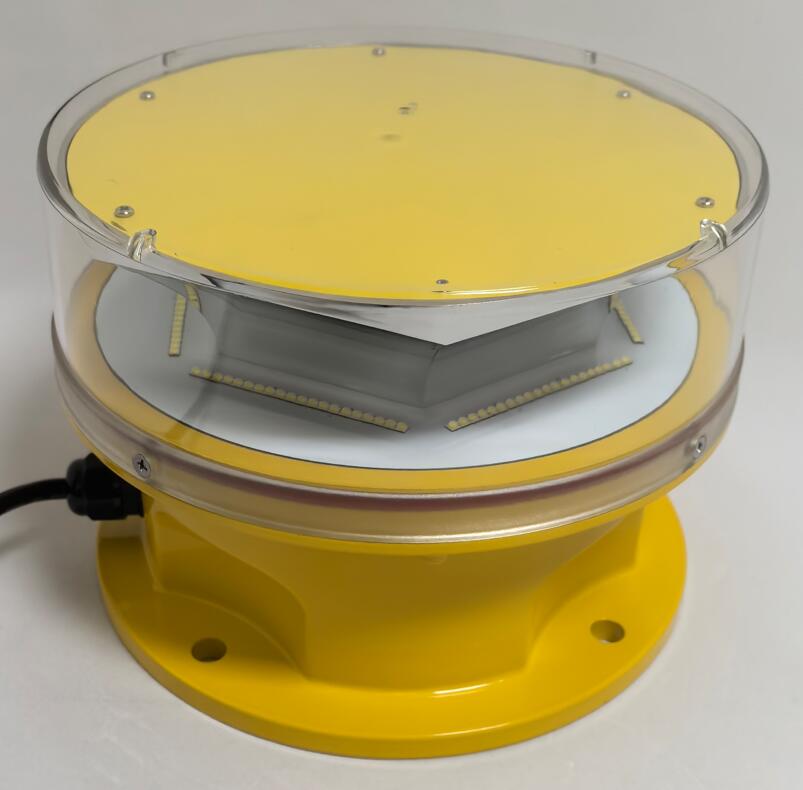Posted: 2025-07-07
In an era of unprecedented urban vertical expansion and increasing air traffic density, aircraft obstruction lights have emerged as silent sentinels protecting both airborne and ground-based infrastructure. These specialized lighting systems form a critical visual language that prevents catastrophic collisions between aircraft and tall structures. This article examines the technological advancements, regulatory landscape, and innovative solutions shaping today's obstruction lighting systems.
The Critical Safety Imperative
Modern aviation faces three key challenges addressed by obstruction lighting:
Urbanization: Over 70% of new construction exceeds 150m height

Air Traffic Growth: Projected to double by 2040
Low-Altitude Operations: Drone and eVTOL traffic increasing exponentially
Lighting System Classification
1. ICAO Standardized Categories
Type Intensity Color Flash Pattern Height Application
L-810 32.5 cd Red Steady <45m structures
L-864 2,000 cd Red 20-60 fpm 45-150m structures
L-856 200,000 cd White 40 fpm >150m structures
2. Specialized Applications
Wind Turbine Marking: FAA Type L-865 dual systems
| aircraft obstruction light |
Bridge Lighting: Custom spacing for cable-stayed designs
Transmission Lines: High-voltage corridor markers
Offshore Platforms: Marine-rated solutions
Technical Specifications
Modern systems feature:
Solid-State Lighting: 100,000-hour LED lifespan
Adaptive Intensity: 10-200,000 cd auto-adjustment
Networked Control: IoT-enabled monitoring (4G/LoRaWAN)
Extreme Environment: -40°C to +85°C operation
| aircraft obstruction lights |
Global Regulatory Framework
Key standards include:
ICAO Annex 14: International civil aviation requirements
FAA AC 70/7460-1M: US obstruction marking standards
EN 61820: European aviation ground lighting
CASA MOS 139: Australian aerodrome specifications
Compliance essentials:
360° Coverage: <2° dead zone tolerance
Flash Synchronization: ±5ms across multiple units
Color Consistency: CIE x,y chromaticity coordinates
Redundancy: Backup power for 72+ hours
Installation Best Practices
Critical engineering considerations:
Structural Analysis: Wind load and vibration modeling
Aerodynamic Integration: Ice mitigation designs
EMI Shielding: Telecom interference prevention
Access Planning: Permanent maintenance platforms
Innovation Frontiers
Smart Lighting Solutions
Aircraft-Activated Systems: Radar-triggered operation
Predictive Maintenance: AI-driven failure forecasting
Digital Twins: Real-time performance simulation
Sustainable Technologies
Solar Hybrid: Off-grid capability
Avian-Safe: 590nm amber spectrum
Recyclable: Aircraft-grade aluminum construction
Case Study: Urban High-Rise Implementation
A recent Asian megaproject demonstrated:
428 obstruction lights across 12 towers
47% energy reduction via LED conversion
0.01% failure rate over 24 months
Full integration with city ATC systems
Operational Challenges & Solutions
Challenge Innovative Solution
Light Pollution Directional optics
Ice Accumulation Aerodynamic heating
Bird Strikes UV-reflective coatings
Power Reliability Piezoelectric backup
Emerging Technologies
Next-generation developments include:
LiFi Integration: Dual-purpose data transmission
Holographic Markers: 3D aerial projection
Self-Healing Coatings: Nano-material surfaces
Blockchain Logging: Immutable compliance records
Future Outlook
The sector is evolving toward:
Cognitive Systems: ML-optimized operation
Multispectral Marking: Visual/IR/RF combination
UAS Integration: Drone traffic management
Space-Grade Materials: Graphene components
Aircraft obstruction lights have transitioned from simple warning devices to intelligent safety systems that actively contribute to airspace management. As urban development continues its vertical trajectory and air traffic becomes increasingly complex, these lighting solutions will play an even more critical role in collision prevention.
The coming decade will see obstruction lighting become fully integrated into digital air traffic ecosystems, providing not just passive warnings but active data points for airspace management. For aviation authorities and infrastructure developers alike, investing in advanced obstruction lighting represents both a regulatory requirement and a fundamental contribution to global aviation safety - ensuring that our growing cities remain safely navigable for generations of aircraft to come.